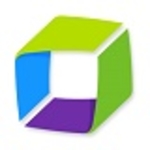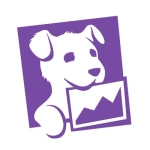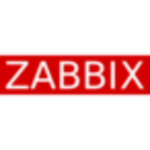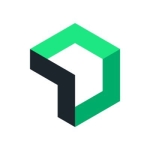What is our primary use case?
We use the product heavily in our ecosystem. The prime focus for our consumption is for Telkom - a telco and also the mother company. Telkom bought Business Connexion, the company that I fall into. The IT company, BCX, belongs to Telkom. The current real estate that we're responsible for, in Telkom, that we support and maintain on their behalf, is using AppDynamics. We use it for application performance monitoring alongside Foglight, which we would like to replace.
What is most valuable?
Everything that AppDynamics yields we use in some way.
We are a rather big user of AppDynamics. We use synthetic monitoring.
From an application perspective, all the elements that come stock standard with the product, we are heavily invested in. We built a long list of dashboards and auto-alerts that goes through our call center to resolution groups, to fix issues, as and when they occur.
The SAP monitoring element is very helpful. Historically, three or four years ago, AppDynamics couldn't tool an SAP instance. Now, there's a specific agent that you can deploy to SAP. We've invested in that element. There seems to be a market requirement for that element. Fairly recently, however, Dynatrace also added that to the inherent product capabilities, in order to monitor SAP ecosystems.
What needs improvement?
From an AppDynamics point of view, and possibly based on the fact that it's now part of Cisco, is that Cisco may fundamentally have a different view of the world. If you compare AppDynamics with Foglight, as an example, Foglight's got the ability (even the old versions of the product that we currently work with) to offer visibility within the inherent infrastructure which is certainly lacking on the AppDynamics side. I know that there're other products on the Cisco side that can do similar things as Foglight. If it would be able to give you more infrastructure visibility in this solution, it would certainly make the product stronger.
The cost element is an issue. I can't expect the company to change its way of work. However, given the fact that we earn and do all our business in South African Rand, I would prefer to buy in Rand as opposed to the American dollar or British pound. In our case, dollars are preferable. The exchange rate between our currency and the international currency makes planning much more difficult, and socio-economic changes heavily impact our commercial planning and budgets. From my perspective, that would be a step in the right direction.
Quite often we are asked to do a POC or POV, proof of value, or show that the technology works, and we are given licenses to do that. However, the current commercial model with AppDynamics is that you buy a year or three years. There's nothing more and nothing less available. Some of our customers would prefer a five-year engagement. Some of our other customers would prefer a shorter duration. I would propose, and we actually asked AppDynamics, a dispensation where you have the licenses available in a set timeframe and you can use it as and when you require. The concept of a true-up at the end of some period, may make our lives easier with reference to having to scale up and down our ecosystem. Basically, they need to offer just a bit more flexibility on the commercial model.
If it's possible to buy in Rand, or at least keep the price points for a year the same, or even over three years, that would help with currency fluctuations. We've recently sold to one of the big banks, a sizable chunk of AppDynamics. We can give them the dollar quote now for year one, certainly. That's no problem, as we know what the current exchange rate is, however, neither us nor the bank has any idea of what the exchange rate will be next year. It becomes a bit of a moving target. What do you plan for? It becomes a bit of a crystal ball exercise with reference to what the exchange rate is going to do, and therefore, what you need to do from a planning point of view, budget-wise. There must be a more elegant way to handle this challenge, although it's certainly not in our domain to do something about it. That's the OEM's prerogative.
For how long have I used the solution?
I've been using the solution for many years.
What do I think about the stability of the solution?
The product is quite stable. We don't have a problem with the stability of the product. Now that we are in the cloud, it is even better. Historically, the underlying infrastructure and database that support everything was under our own personal management, inside our data centers. Now that it's in the cloud, it's even better, from that perspective. I don't have a problem with the stability. We certainly haven't experienced challenges that can be attributed to AppDynamics with reference to stability. It's a quite stable product.
What do I think about the scalability of the solution?
Based on the rate or price for this, I would argue, certainly from a South African point of view, very seldom would a small company be able to afford the price. Based on the ecosystem that the customer starts off with, they may have different price points or different scales in order to make it more compelling for smaller and medium-sized business. Certainly, our experience is that the smaller companies, although they love the product and can certainly benefit from the product, find it a bit expensive for them. And this is where the Dynatrace model, possibly, becomes more appealing to them.
Aside from the cost, scalability is quite easy. We regularly add, edit, and delete elements off of our real estate. Scalability isn't much of a challenge. It takes a bit of time to implement and then add additional dashboards and relate the different elements to each other. Once you've done that, it's not that big a challenge.
How are customer service and technical support?
I'm not technically responsible for technical support. Historically, we would ping the OEM, and ask them to assist us on something. There's always a scenario where you would want bigger or quicker turnaround or a quicker response to these things. That said, it's not a major challenge, though. Like any other company, if they can improve on their turnaround time on technical queries, it may assist all of us, all of their respective customers. However, that said, it's certainly not a major challenge. We do get feedback in a reasonable time. You always want it to be quicker. It's reasonable and I don't think you can necessarily expect quicker turnaround.
They do not have, for example, the concept of following the sun, where you have people on standby 24/7, to really support clients.
How was the initial setup?
In terms of the setup, you need experienced people with strong skill sets to handle it. If you try and Google your way through it, it's not going to cut it. You will not get the return on investment if you try and do it yourself. It's important to use capable, experienced people to do it. Unfortunately, that comes at a cost as well.
It depends on how you deploy it and what do you need to do, however. We have a smallish team with the capabilities to implement. We have quite strong skills, and yet, not a big team. That said, the stock standard implementation is not that difficult. When it becomes integrated into a bigger landscape, it will get more complex. You will need to apply your mind seriously to what you display from a dashboard point of view, to effectively translate what happens from a monitoring point of view. Integration into things like a CMDB, as an example, will need to be addressed.
For example, in our case, we need to have an HP server that needs to read as a CMDB and display it in a stock standard visible dashboard.
What's my experience with pricing, setup cost, and licensing?
The cost for AppDynamics is becoming a challenge, as well as the apparent AppDynamics move from a Magic Quadrant point of view. We're looking at Dynatrace, which we need to understand. The product is cheaper, however, we are trying to determine if the functionality is the same.
Which other solutions did I evaluate?
We are heavily invested in AppDynamics, however, in the latest Gartner report, it looks as if Dynatrace did quite well. I believe the Dynatrace product in ESER is slightly cheaper than the AppDynamics one.
We were looking at potentially diversifying our offer to market through inclusion. We are not proposing dropping AppDynamics. We have a strong relationship with AppDynamics and Cisco, however, it is certainly clear, from a South African point of view, the markets seem to be requiring Dynatrace as opposed to AppDynamics.
In order for us to make an informed decision, I would want to understand the difference between the two products. I haven't worked personally with Dynatrace, historically, and we haven't invested in that product, although they're certainly relevant in the South African market. We need to understand what's the difference between the two, what's the ups and downs. I know AppDynamics quite well and have very little information on Dynatrace. I'd like to attempt at trying to gain some more information in order for us to make a decision on it.
What other advice do I have?
We are an IT company. We are selling this to the market as well. We have a strong relationship with AppDynamics through Cisco. We're a reseller of the product. We have a stronger relationship with AppDynamics, both currently and over the years, to the exclusion of all alternatives. We're using AppDynamics from an application performance monitoring point of view.
I'm not sure if we are currently on the latest version of the solution, however, it's my understanding that we're either are or will be moving to the latest version of the solution.
We bought the Dynamics cloud instance. It's likely based around Europe. I'm not entirely sure. Certainly, from our perspective, I believe it's in Europe in terms of where the controllers sit. We've been on there for the last two years or so.
The controllers would be in the cloud, yet, certainly, from a historical point of view, we have migrated to the cloud recently. I'm not a hundred percent sure if we're done with that process. We may have some on-premises instances still. As a service that we sell to external customers, there are on-prem instances as well.
In general, I would rate the solution at a seven out of ten.
There are things that they can do to improve the product. We are working with them on that front. We are talking to them on an almost daily basis. Certainly, my team is talking to them daily. Obviously, pricing is a concern - certainly from out geographical point of view. Working the exchange rate differences between the different currencies makes local consumption seriously expensive.
Dynatrace seems to be gaining momentum in the local market. If you look at Gartner's latest report that I saw fairly recently, Dynatrace is, even from a technical capability point of view, doing more, or better, than AppDynamics. I'm not entirely sure what they use as a basis to plot an application on those quadrants from a Gartner point of view, however, Dynatrace certainly looked as if it went past AppDynamics fairly recently.
I need to better understand the alternative products. It's a question of time until our current anchor customers start asking this very question. Why should we not consider going Dynatrace as opposed to AppDynamics? I don't yet have the ability to have an informed discussion on it.
Which deployment model are you using for this solution?
Public Cloud
Disclosure: My company has a business relationship with this vendor other than being a customer: Reseller


















